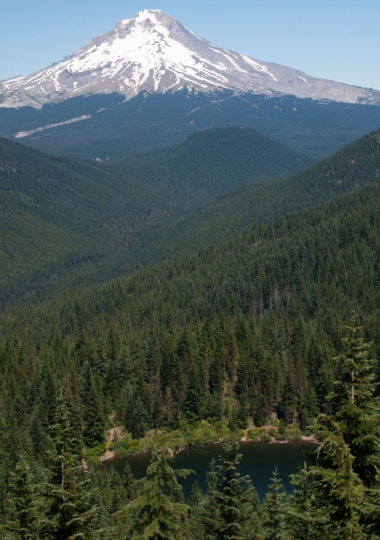
Stocking Oregon's hike-in lakes
Not all of Oregon’s high elevation lakes support fish populations. To help create fisheries in some of these off-road areas, ODFW stocks hundreds of lakes every two years with brook, rainbow and cutthroat trout. Here are their locations.

Recent stocking locations
North Willamette District
Includes lakes in the Mt. Hood National Forest and the Bull of the Woods and Roaring River wilderness areas.
See Google map of stocking locations
Mid-Willamette District
Includes lakes in the Willamette National Forest and Mt. Jefferson Wilderness.
South Willamette District
Includes lakes in the Willamette National Forest and the Three Sisters, Waldo Lake and Mt. Washington wilderness areas. You also can find a recent history of stocking in this district here.
See Google map of stocking locations
Rogue District
Includes lakes in the Rogue River-Siskiyou National Forest and the Sky Lakes Wilderness.
Umpqua District
Includes lakes in the Umpqua National Forest and the Rogue-Umpqua Divide Wilderness.
See Google map of stocking locations
Deschutes District
Includes lakes in the Deschutes National Forest and the Three Sisters and Mt. Jefferson Wilderness areas.
See Google map of stocking locations
Mid-Columbia District
Includes lakes in the Mt. Hood National Forest, the Mark O. Hatfield Wilderness and the Olallie Lake Scenic Area.
Klamath District
Includes lakes in the Winema and Rogue River national forests, and the Sky Lakes and Mountain Lake wilderness areas.
Wallowa District
Includes lakes in the Eagle Cap Wilderness Area.
Learn more about how to fish hike-in lakes
High elevation hike-in lakes stocked every two years.
Every two years, ODFW plants over 300,000 fingerling fish in hundreds of Cascade lakes from Mt. Hood to Klamath Falls. Additional fish are dropped in the alpine lakes of the Eagle Cap Wilderness in the Wallowa Mountains -- including Lake Legore, Oregon’s highest lake at 8,950 feet.
The 3-inch fingerlings are transported mostly by helicopter in a custom made shuttle carrying 30 individual canisters that hold a few gallons of water and up to 1,000 fingerling trout. The canisters are opened individually by remote control from inside the cockpit while the chopper hovers over a lake.
Biologists like to use three-inch, juvenile fish because they can load more of them onto the aircraft and make the 100 ft. fall to the lake with less trauma than larger fish – 95 percent of the little fish survive the long freefall into the lake.
Depending on conditions, trout planted as fingerlings can reach keeper size (8-inches) in two years.
A brief history of hike-in lakes stocking
- 1912, 1913 – several thousand fingerling trout were horse-packed into 116 Cascade lakes for the first time.
- 1918 – a specialized rail car named Rainbow started hauling aerated milk cans containing fingerling trout to trailheads around the state. From there, strings of pack horses carried the fish the final leg of the trip.
- After WWII, fixed wing aircraft replaced most pack strings.
- In 1980, helicopters replaced fixed wing aircraft – increasing the number of fish that could be transported, and cutting in half the time it previously took to stock.


